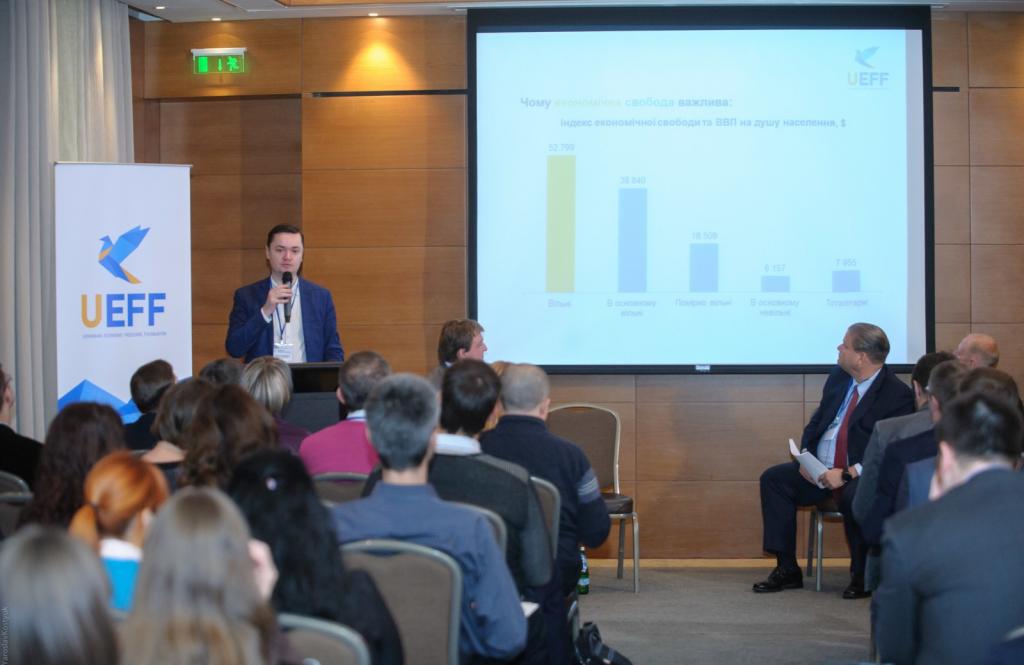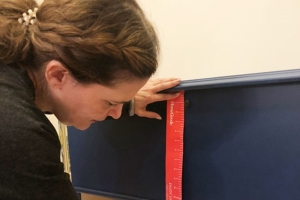The question of how to reduce income tax is very relevant today for many enterprises. One option is to create a CGN. What it is?
The essence of the formation of CTG is that payments are calculated on the basis of the total result of all members of the group. That is, income tax is calculated in such a way as if all participants are part of a single organization. This allows you to summarize profits and losses within the same group formation, which gives a profit in taxation.
Concept and concept
The Consolidated Group of Taxpayers (CTG) is a voluntary association of legal entities - income tax payers - based on an agreement. The responsible member of this group is an organization that is a party to the agreement on the establishment of a CTG and meets the established criteria.

Signs
The concept of a consolidated group of taxpayers is closely related to its main features.
The specifics of the association provide for a number of functions that such a procedure and all its participants must comply with:
- Organizations have a fairly high degree of joint participation, for example, are members of the holding.
- The term for creating such a group may be at least two tax periods.
- The union of all the member-members of the CSC can be considered as a single economic unit.
- Participation in the CTG is ensured by the conclusion of a special agreement.
- Income tax is calculated on the basis of the total profit (or loss) of all CGT members.
The main goals of creation
Participation in consolidation provides the following benefits for companies:
- Combine the tax base of several organizations.
- Centrally calculate and pay income tax.
- Reduce tax control.
- Average profit and loss, thereby consolidating the base.
Features
The main condition for the adoption of a new participant in the CTG is the compliance of the results of its activities with the standards of Article 25.2 of the Tax Code. The decision to accept a new member must be signed by all members of the group. In addition, it is imperative to amend the existing agreement on the establishment of the CTG.
It is also signed by all participants, including the new member. If the performance indicators of the new company do not correspond to the data indicated in the Tax Code of the Russian Federation, then government bodies may refuse to register the changes made.
Members of the group
The responsible member of the consolidated group is a company that is a party to the KGN agreement. This participant is obligated (in accordance with the terms of the contract) to calculate and pay tax for the whole group.
Confirmation of authority of the responsible member of the consolidated group of taxpayers is a signed and registered act - an agreement on the creation of a taxpayer. If the private trader is the largest taxpayer, the contract must be registered with the tax service, where he is registered.
Who can not be a member of the CTG
These include companies listed below:
- Clearing.
- Insurance.
- Residents / members of special and free economic zones.
- Credit consumer cooperatives.
- Participants of other CTG.
- Microfinance companies.
- Organizations exempted from income tax or not recognized by taxpayers.
- Educational or medical facilities applying a zero income tax rate.
- Organizations whose business is gambling.
As for banks and non-state pension funds, their participation in the CTG is possible only on the condition that all other participants are also banks or funds.
Rights and obligations
The rights of the group member include:
- Submission of explanations to the relevant authorities on the issues of accrual and payment of taxes.
- The opportunity to be present in all ongoing tax audits.
- Receipt of acts of inspections, decisions and other documents on the economic activity of CTG from the IFTS.
- Obtaining information from the fiscal service, which is a tax secret about the participants of the CTG.
- Appeal of acts of inspections and actions of tax officials related to the fulfillment of their obligations.
- Filing an application for compensation for funds paid in excess of the norm.
The duties of the participant of the CTG include:
- Accounting, calculation and payment of tax according to the results of the activity of the CTG.
- Submission of an agreement on the formation of CTG for registration.
- Presentation of a profit tax report, as well as documents received from group members.
- When leaving the community or terminating its activities, the transfer of information on the calculation and payment of tax.
- Payment of fines issued in connection with non-compliance with tax laws.
- Demand for primary, tax and accounting registers.

Advantages of CGN
The biggest advantage for members of a consolidated group is that the burden of income tax is significantly reduced. This is due to the fact that the indicators of loss-making and profitability of all participants in the group of companies are generalized.
The tax base of all member companies of the group is formed by consolidation. However, transactions between the parties to the agreement on the creation of CTG cannot be subject to transfer pricing. The only exceptions are transactions concluded in relation to extracted minerals.
Participating companies are combined without creating a legal entity to reduce the burden of income tax. It is calculated for the entire CTG and is paid on the basis of the norms prescribed in Ch. 3.1 of the Tax Code.
Group disadvantages
Of course, there are also negative aspects of such a community, for example, very strict conditions for joining the group, which make it possible to use preferences only for a limited circle of the largest taxpayers.
Terms of Creation
The main requirement for the organization of consolidated groups of taxpayers is that the responsible member of the CTG indirectly or directly controls 90% of the shares in the authorized capital of each company included in the group. It is important that this requirement is met throughout the duration of the contract to create a group.
It is also important that each of the enterprises included in the CTG throughout the past year has the following indicators:
- The value of net assets, according to information from the financial statements, should be more than the amount of the authorized capital.
- The total amount of revenue from the sale of goods and materials, the provision of services and other income should be greater than or equal to 100 million rubles.
- The total amount of taxes paid (VAT, profits and mining) and excise taxes must be greater than or equal to 10 million rubles.
- The total value of all assets in the balance sheet as of December 31 should be more than or equal to 300 million rubles.
In addition, enterprises should not be in the process of liquidation, bankruptcy or reorganization.
It must be borne in mind that the period for the formation of CGN should be equal to a period of at least two years.

Features of the contract
The agreement on the establishment of CTG points to the following important points:
- The subject prescribed in the document.
- List of parties to the contract and their contact / registration data.
- Name of the company responsible party.
- Information on the obligations of each member of the group and separately responsible participant (terms and procedure for execution).
- Validity period of CTG.
- Information on liability that arises in connection with non-compliance with the terms of the contract.
- The amount of information for calculating the tax base.
To register a contract for the creation of a group, the responsible participant provides a package of documents that includes:
- The contract itself (in 2 copies).
- Announcement on the creation of the CTG, signed by all members of the group.
- Documents indicating the authority of persons representing companies.
- Accounting and financial documents confirming that all members of the group have the right to create CTG.
The deadline for submitting documents is until October 30. The decision to register the agreement is made by state bodies within a month.
In case of refusal, the group has the right to re-submit registration documents. A copy of the decision containing the refusal is sent by the tax service to the responsible party within 5 days and is handed over to its authorized person. The decision can be appealed to the deadlines established by law.

Amendments to the contract
Amendments may be required for one of the following reasons:
- One or more participants are in the process of liquidation.
- The reorganization of one of the participants is expected in the form of a merger, division or spin-off.
- The new company joins the group.
- One of the participants decides to leave KGN.
Changes are recorded in the contract as a separate agreement, which is signed by all members of the group, including those who have just joined. This agreement is also submitted to the FTS for the registration procedure.
To register an agreement on amendments to the contract, the responsible participant must submit the following documents to the tax service:
- Message about the need to make changes in duplicate.
- Credentials of signatories.
- The decision to renew the contract in duplicate.
- Documents confirming that participants comply with all requirements of the law.
Registration of changes is made within 10 days after the submission of a full package of documents. As a result, the representative of the responsible participant receives 1 copy of the agreement with the necessary seals and signatures of the responsible persons.

Reasons for Registration Denial
There are a limited number of reasons why the IFTS may refuse to register a change agreement:
- Documents signed by unauthorized persons.
- Participants do not comply with all the conditions prescribed by Art. 25.2 of the Tax Code.
- Filing deadlines not met.
- Not all necessary documents are submitted.
Group exit conditions
Upon exiting the CTG, the participant must:
- Calculate and pay income tax for the period during which the company is no longer a member of the group.
- Modify income tax formulas from the new reporting date.
- Submit income tax returns for the period when the company was no longer in CTG.
If a responsible participant leaves the group, then his duties include:
- Amending the relevant financial documents for calculating income tax.
- Recalculation of advances on income tax for completed periods and the presentation of clarifications for the tax to tax.
Termination Procedure
The grounds for termination of the activities of CGN may be:
- Termination of the agreement by agreement of the parties on the establishment of CTG.
- Judicial cancellation of the contract.
- Refusal to submit a package of documents about changes in the contract, dictated by the release of one of the participants who committed a violation of the requirements.
- Liquidation or reorganization.
- Opening a bankruptcy case against a responsible party.
- Violation of the terms of the Tax Code by the parties.
The action of the CTG cannot be terminated if changes have occurred in the authorized capital of the participant that did not violate the conditions of paragraph 2 of Art. 25.2 Tax Code.
If the members of the CTG make a joint decision to terminate the contract, the responsible participant must send the initial agreement on the creation of the CTG with the registration mark to the IFTS within 5 days, as well as the decision to terminate the contract signed by all parties.
The date of completion of the CTG is the first tax period following the onset of the circumstances specified in the declaration.

Member Income Tax
The creation of such a group allows you to answer the question of how to reduce income tax. Its object is the sum of the total profit of the participants of the CTG. A responsible member of the community maintains tax reporting for the entire group.
In the consolidated group of taxpayers, income tax is calculated by the responsible participant on the basis of data received from other CGT participants.
Each community member is required to provide the data necessary to calculate the total tax base. The deadline and procedure for submitting such information shall be established by an agreement on the creation of a group.
If a member of the CTG provides false data or does not report his reports, this leads to an incomplete tax payment for the entire consolidated group. For this, the violator of the provisions of the contract will be charged a fine of 20% of the amount of unpaid tax (if he simply made a mistake). The same acts committed intentionally entail a fine of 40%. Other members of the CTG in this case will not be held accountable.
Group members can independently determine the consolidated tax base, to which the rate is applied not of 20%, but 9% or 15%. It is calculated on the basis of income received by the group members and expenses incurred by them.
When calculating, the responsible party takes into account only those incomes that are taxed at a rate of 20%. The profit and the formula for calculating it are standard:
NP = BN * S,
where BN is the tax base (thousand rubles).
C-rate (%).
The definition of the tax base is based on data from the income statement, the form of which is determined by law.
Features of determining the income received by members of the CTG are established by Art. 278.1 Tax Code, which supplements the second part of the Tax Code.
In particular, each member of the group independently applies the standards for calculating their expenses. Income tax expenses include:
- Payments under voluntary insurance contracts.
- Expenses in the form of deductions to the reserve for the forthcoming payment of vacation to employees and to the reserve for the payment of annual remuneration for years of service.
- Bad Debt Provisions.
In tax reporting, members of the CTG are not required to form a reserve:
- For doubtful debts of some members of this group.
- For warranty repairs in terms of product sales to another member of this group.
- For possible loan losses and equivalent debt.
If such reserves have been created, a member of the group includes these amounts in non-operating income for the last tax period before joining the CTG.
The size of the monthly advance payment in the first quarter of the year when the consolidated group began to operate is determined as the sum of the monthly advance payments of all members of this group in the fourth quarter of the previous year.

Declaration
This document is compiled by the responsible participant according to the rest of the group members, providing the document further to the relevant bodies of the Federal Tax Service. Profit information is taken from the report on the financial results of the established form form. He is also required to submit all necessary documents to the group itself.
A desk audit of the income tax return for CTG is carried out in accordance with the new paragraph 11, which is supplemented by Art. 88 of the Tax Code of the Russian Federation.
In case of failure to submit a declaration within 10 business days after the deadline for filing, the tax authorities decide to suspend operations on the bank accounts of all members of the CTG.
Tax payment
The profit and the formula for calculating it in the federal budget are appointed by the responsible participant at the place of his location without distribution between other members of the CTG and their individual units.
Payments to the budgets of the constituent entities of the Russian Federation for taxation of profits are calculated at rates applicable in the territory where the group members and their individual units are located.
To pay tax, group members transfer money to the responsible member. They should not include the amount of money transferred to the responsible party for non-operating expenses, and the responsible participant should not include this amount in non-operating income.

Conclusion
As part of a consolidated group of taxpayers, enterprises can greatly facilitate the tasks of accounting and reporting and reduce the total amount of tax deductions to the budget, although this requires some preparatory and registration actions at the beginning.
Another important advantage of KGN is that transactions concluded between its participants are in most cases not subject to control over transfer education, despite the presence of a factor of interdependence on the ownership of shares in the authorized capital among organizations belonging to the group. However, it should be noted that there are rather high limits on the requirements for joining the CTG, which allows representatives of large enterprises to work in such a group.









